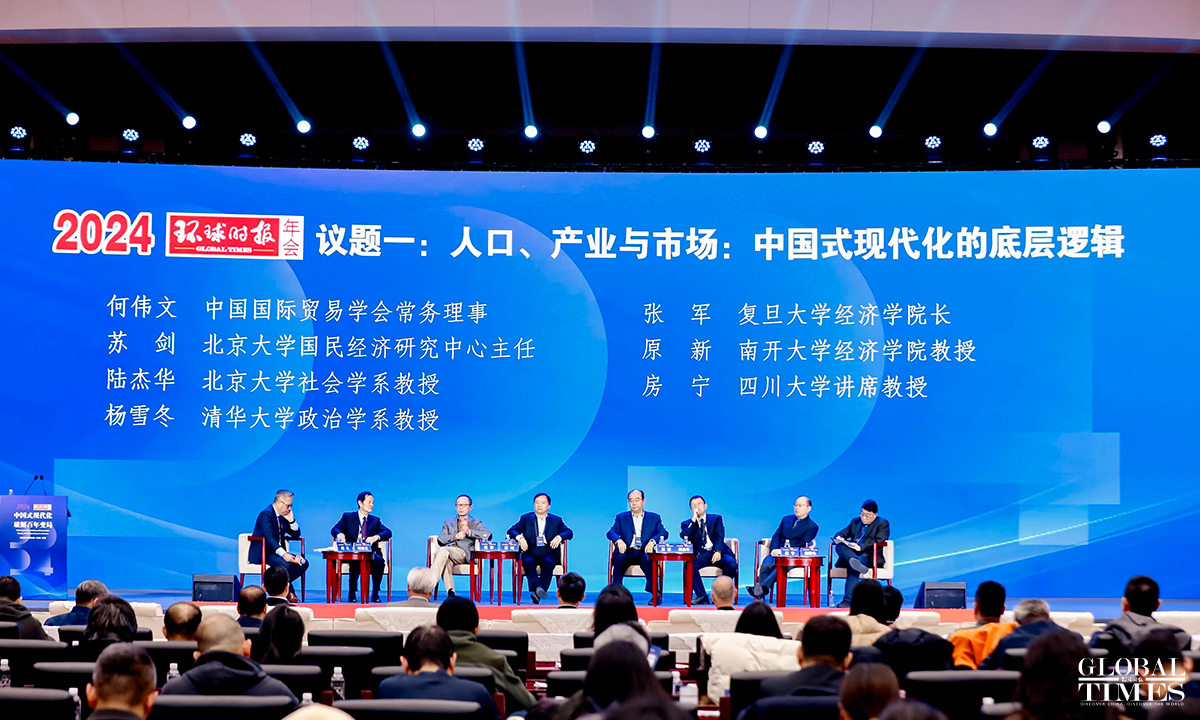China's demographic dividend persists, with quality labor force to further boost national growth: experts

The 2024 Global Times Annual Conference. Photo: GT
China's demographic dividends have not disappeared, as the qualitative demographic dividends, for example high-quality labor force, act as a strong driving force for the country's development, experts said at the 2024 Global Times Annual Conference held on Saturday in Beijing.
In the past, China's social and economic development relied on quantitative demographic dividends. In the future, we should rely on qualitative demographic dividends to boost our economic development and support Chinese modernization with high-quality population development, Lu Jiehua, a professor of sociology at Peking University, said at the conference.

Lu Jiehua, a professor of sociology at Peking University. Photo: GT
In the process of Chinese modernization, the country's demographic situation has undergone historic changes, and a low birthrate, aging population and divergence in regional population among other changes will influence future social and economic development, Lu said.
Lu said the existing measures to encourage a higher birthrate are insufficient, noting that measures in various aspects including education, retirement, healthcare and employment are also needed.
"We should not only see the challenges in China's demographic situation, but more importantly the opportunities," Lu said. He said the country's 376 million floating population accounts for over one-fourth of the country's total population, serving as a strong momentum to the country's social and economic development.
China's elderly population aged 60 and above hit 280.04 million at the end of 2022, accounting for 19.8 percent of the total population, according to the latest report released by the Ministry of Civil Affairs.

Yuan Xin, a professor from the Institute of Population and Development at Nankai University's School of Economics. Photo: GT
If we are able to increase the number of children per household to 1.3 or 1.4 from 1.1, China's population will be able to maintain at around 1.3 billion by 2050, Yuan Xin, a professor from the Institute of Population and Development at Nankai University's School of Economics, said at the conference on Saturday.
"Since the founding of the People's Republic of China in 1949, the country has seen a decline in fertility rates while life expectancy has risen. In the 1960s, a family had an average of six children but now that has declined to 1.1. Average life expectancy has extended from 45 years to 78 years," Yuan said.
China's demographic dividends have not disappeared as the quality of population continues to rise, according to Yuan. He said the country's tens of millions university and college graduates and around six million secondary vocational school graduates will inject new momentum into China's future economic development.
Whether we could turn our demographic characteristics into demographic dividends relies on economic policies and the broader economic development environment, Yuan said. "One of the most important factors in this transition is employment," Yuan said, believing that as China's demographics shift, the means of making better use of its population dividend should adapt accordingly.


